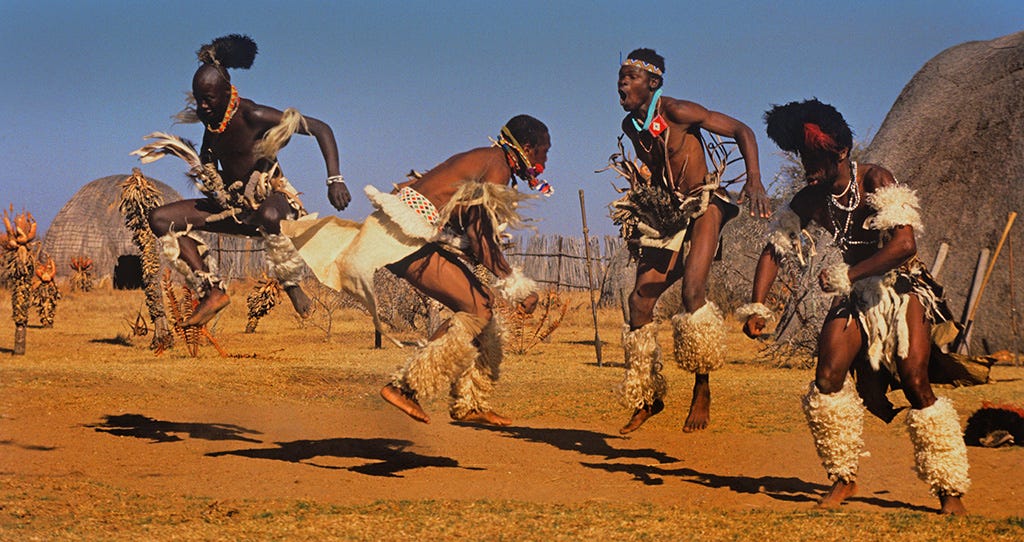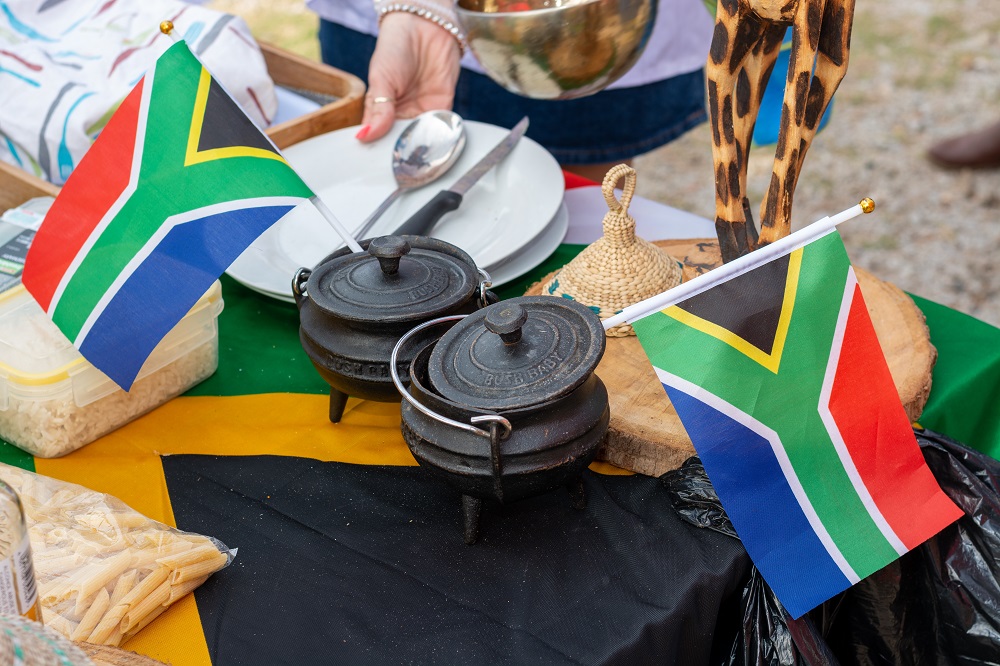A Biased View of South African Culture Today
A Biased View of South African Culture Today
Blog Article
The 4-Minute Rule for South African Culture Today
Table of ContentsSouth African Culture Today Fundamentals ExplainedSome Known Incorrect Statements About South African Culture Today Getting The South African Culture Today To WorkThe South African Culture Today PDFsThe Basic Principles Of South African Culture Today 5 Easy Facts About South African Culture Today Shown
An issue of value in Zambian villages is the passing away of loved ones. All members of the village put cash, time and initiative together for the interment of the deceased.During the mourning duration; guys remain outside the house and the women stay inside your house of the deceased. After speaking about the deceased, the town walks to the place of burial to claim their last farewells. Music and dance is a really important facet of the Zambian society. The numerous tribal units have their very own dancing kinds; nevertheless, makishi prevails amongst all people.
7 Simple Techniques For South African Culture Today
When it concerns music, drums are used the most, with a variety of drumming ceremonies. In Zambia, majority of the people are Christian; Protestant and Roman Catholic. There are small teams of Muslims and Hindus, with the rest adhering to local indigenous tribal beliefs.

South African heritage and culture is tremendously varied, and contains various groups of people who each have their own customs and beliefs. Having such a diversity of people and cultures is what makes South Africa so one-of-a-kind. In truth feeling of the expression, we are a rainbow country.
Making it the 7th on the list of countries with the most Portuguese people in it outside of Portugal. Portuguese is not just a society, but it is also a language and a race. Portuguese individuals stem from the nation of Portugal in Europe, however, due to Portugal (like lots of various other nations in Europe) checking out the globe and conquering various other nations during the 15th 20th centuries, South Africa has what we call Portuguese South African's living in it.
The 3-Minute Rule for South African Culture Today
Amongst the famous features of the topography is a plateau that covers practically 2 thirds of the facility of the country. The plateau complex climbs toward the southeast, where it culminates in the Drakensberg variety, part of a cliff that divides the plateau from the seaside locations. The Drakensburg consists of Sparkling wine Castle, the highest possible peak in the nation.
The region north of the Witwatersrand, called the bushveld, slopes downward from eastern to west towards the Limpopo River, which creates the global boundary. The western section of the plateau, the middleveld, additionally descends towards the west and varies in altitude in between the highveld and bushveld. Between the Drakensburg and the eastern and southerly shoreline, the land comes down to the sea.
Nearer the coast there is a low-lying plain called the eastern lowveld. Southwest of the plateau the nation comes to be considerably a lot more dry, offering way to the hostile desert of the Great Karroo, approached the east by the lower, much better watered plateau of the Little Karroo. Dividing the dry southerly inside from the sandy littoral of the southerly coastline and West Cape is one more array, the Langeberg.
South African Culture Today Can Be Fun For Everyone
The nation's racially, ethnically, and politically divided history has actually generated national and subnational symbols that still operate as symbols of the nation, and others symbols that are approved just by particular groups. The monuments to white inhabitant conquest and political supremacy, such as the Afrikaner Voortrekker ("pioneer") Monument in Pretoria and the Rhodes Monument honoring the British colonial empire contractor and Cape head of state Cecil Rhodes, remain sectarian icons.
The initial contemporary occupants were the San ("bushman") hunter-gatherers and the Khoi ("Hottentot") individuals, who rounded up animals (South African culture today). The San may have been present for thousands of years and left proof of their existence in thousands of ancient review cavern paints ("rock art"). Bantu-speaking clans that were the forefathers of the Nguni (today's amaZulu, amaXhosa, go to my blog amaSwazi, and vaTsonga peoples) and Tswana-Sotho language teams (today's Batswana and Southern and Northern Basotho) moved below eastern Africa as early as the fifteenth century

The two former republics of the Orange Free State and Transvaal (South African Republic) were established by Afrikaner inhabitants who defeated and dispossessed the Basotho and Batswana. Lesotho would certainly have been by force included into the Orange Free State without the expansion of British security in 1869. The supreme unification of the country arised from the South African War (18991902) in between the British and both Afrikaner republics, which reduced the nation to spoil at the start of the twentieth century.
Afrikaners traditionally considered themselves the only real South Africans and, while approving full citizenship to all homeowners of European descent, refuted that status to people of color up until the democratic transition of 1994. British South Africans retain a sense of social and social link to Great Britain without weakening their identity as South Africans.
The Single Strategy To Use For South African Culture Today
The diversity and fragmentation within ethnic groupings and the balance of stress in between those teams during the twentieth century stopped interethnic civil dispute. While intergroup tensions over resources, privileges, and political dominance continue to be, those conflicts are as likely to match Zulu against Zulu as Zulu against Xhosa or African against Afrikaner.
From colonial India, British sellers and managers brought the bent steel ornamental roofing systems and slender lace job pillars that still typify the terraces of homes in the areas and cities throughout the country. Holy places contribute a vital architectural aspect even in the tiniest towns. Along with the rising steeples and classic stonework of Afrikaans Dutch Reformed churches, Anglican churches, synagogues, mosques, and Hindu shrines give range to the spiritual architectural scene.

Slaughtering and the brewing of traditional grain beer are essential in securing the involvement and a good reputation of the ancestors that are taken into consideration the guardians of good luck, success, and wellness. Indian communities navigate to this site preserve their indigenous culinary practices and apply them on Islamic and Hindu routine and ritualistic celebrations. Afrikaners and Coloured individuals collect at weekends and special occasions at multifamily barbeques called braais, where area bonds are reinforced.
Because this was the main economic business of both black Africans and white colonists, conflict in between those teams centered on the ownership of grazing land and animals. In 1867, the biggest ruby down payments worldwide were discovered at Kimberley in the west central location. The wealth from those areas aided finance the exploitation of the best gold reef worldwide, which was uncovered on the Witwatersrand in 1886.
The Of South African Culture Today
This caused misunderstandings and purposeful misstatement in the negotiations of white settlers and government authorities with African principals during the early american period (South African culture today). In the establishment of African books, some elements of common and primarily "tribal trust fund" land period were preserved, and even in white country locations, kinds of common tenure were still practiced in areas with African communities
After the autonomous transformation of 1994, programs for land restitution, redistribution, and reform were set up, but progress has actually been sluggish. The white minority still manages eighty percent of the land. In the wake of agricultural land invasions in Zimbabwe, the Division of Land Matters has actually promised to speed land redistribution.
Report this page